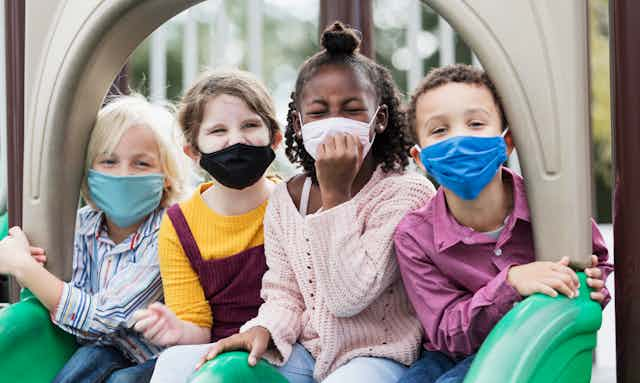
How masks affect breathing
One of the earliest concerns that parents had about kids wearing masks all day was how it might affect their breathing—whether masks would allow them to get enough oxygen or trap in too much carbon dioxide. Guilbert says this was raised as a concern for kids since they breathe more rapidly than adults.
Wholesale N95 Kids Face masks and Wholesale Surgical Kids Face Mask are still an important tool for many families to help prevent the spread of SARS-CoV-2, the virus that causes COVID-19. This includes new and more contagious variants.
Masks help protect unvaccinated and vaccinated people, and are important for individuals to use in areas where the COVID-19 Community Level is high. Masks can be safely worn by all children older than 2 years. They should be considered for children age 2-5 years, who are not yet eligible for the COVID vaccines, and people who are at risk of serious illness. Individuals may choose to continue wearing face masks when they go out so they can protect themselves or their family members. Some parents may have concerns about face masks, and we're here to help. Here are some common questions, along with the facts about kids and masks that will put your mind at ease :
- Do masks make it harder for my child to breathe?
There have been concerns that face masks can reduce oxygen intake, and can lead to low blood oxygen levels, known as hypoxemia. However, masks are made from breathable materials that will not block the oxygen your child needs. Masks have not been shown to affect a child's ability to focus or learn in school. The vast majority of children age 2 or older can safely wear face masks for extended periods of time, such as during preschool or at child care. This includes most children with special health care needs.

Can masks interfere with a child's lung development?
No, wearing a face mask will not affect your child 's lungs from developing normally. This is because oxygen flows through and around the mask, while blocking the spray of spit and respiratory droplets that may contain the virus. Keeping your child's lungs healthy is important, which includes preventing infections like COVID-19.
Do masks trap the carbon dioxide that we normally breathe out?
No. There have been false reports that face masks can lead to carbon dioxide poisoning (known as hypercapnia) from re-breathing the air we normally breathe out. But this is not true. Carbon dioxide molecules are very tiny, even smaller than respiratory droplets. They cannot be trapped by breathable materials like disposable masks. In fact, surgeons wear tight fitting masks all day as part of their jobs, without any harm.Children under 2 years of age should not wear masks since they may not be able to remove them without help. Children with severe breathing problems or cognitive impairments may also have a hard time tolerating a face mask and extra precautions may be needed.

How masks affect social development
Similarly, studies do show that children have a harder time reading the emotions of people who are wearing masks—but that doesn’t necessarily prevent them from learning how to interact with others.
From the earliest months of life, children watch the faces of the people around them. This helps them first distinguish between positive and negative emotions and ultimately learn how to adjust their behavior accordingly. Covering up the bottom half of one’s face with a mask does affect that ability: A study published in Frontiers in Psychology showed that children between the ages of three and five were less adept at recognizing the emotions on photographs of people wearing masks compared to photographs of unmasked people.
But Walter Gilliam, a child psychiatry and psychology professor at the Yale Child Study Center, says this study and others like it are limited by their reliance on still photographs. “I’m more than just my eyeballs,” he says. Children also pick up on cues like how people walk through spaces, the tone of their voices, and the hand gestures they make. “All of that is stripped away from those studies.” He points to another study showing that children have no more difficulty reading the emotions of a person wearing a face mask than they do a person wearing sunglasses.

Leave a Comment